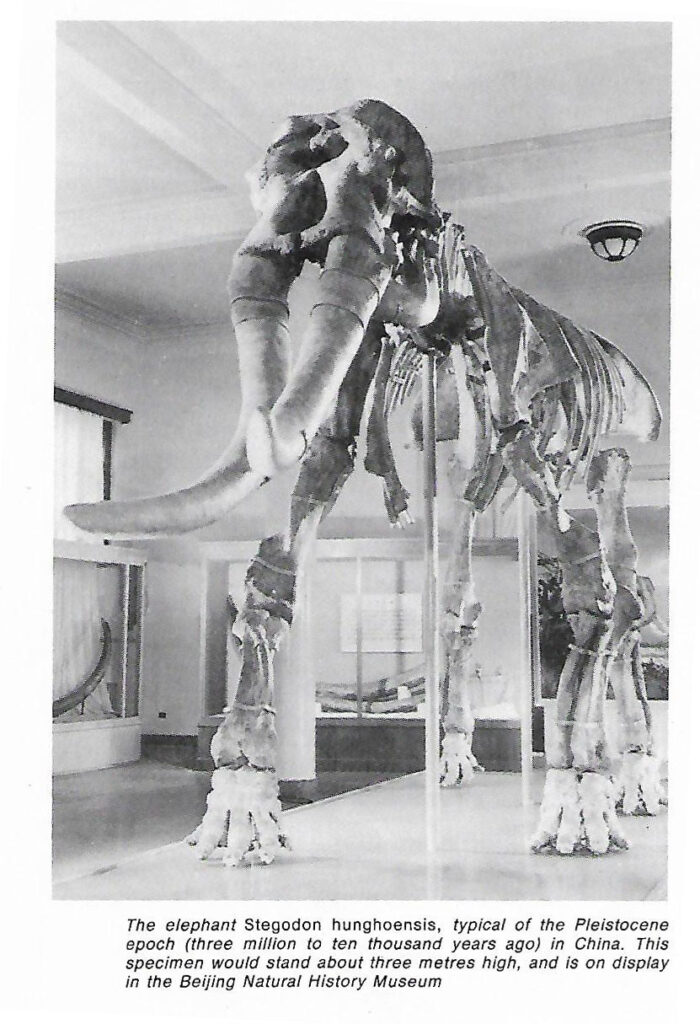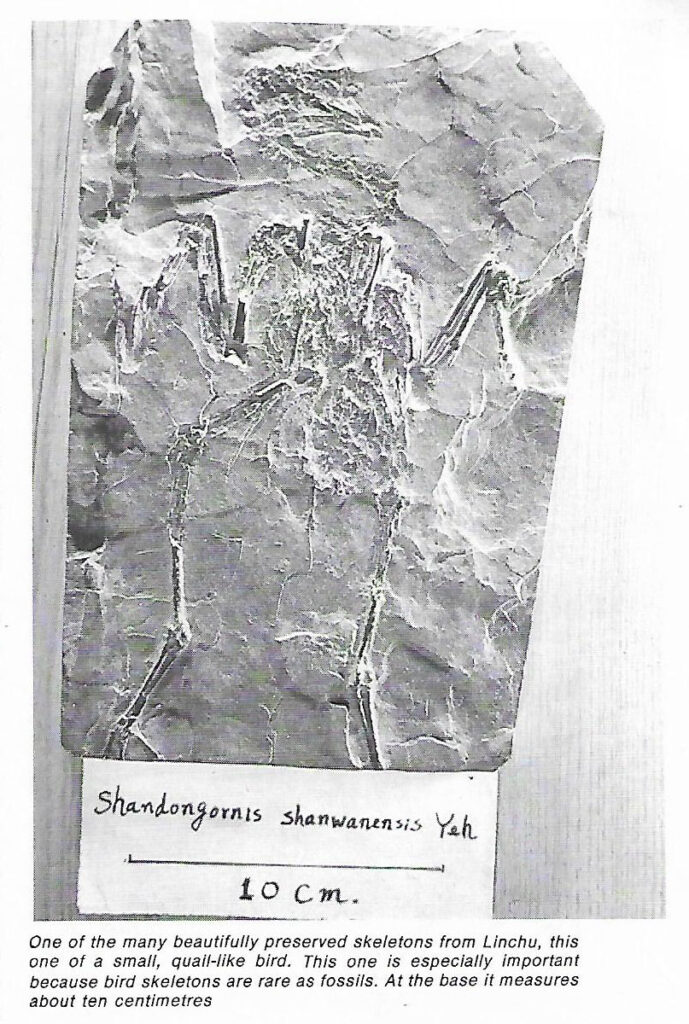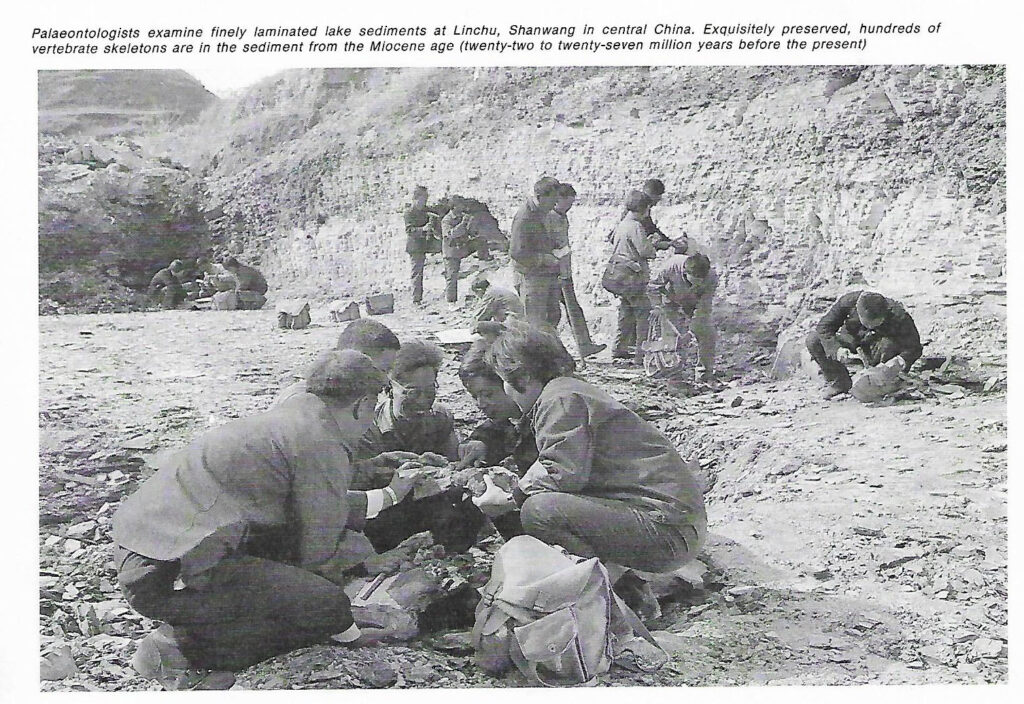AND THEIR BACK – BONED ANIMALS – I
Today if you were to board a plane in Sydney, it would be at least seven or eight hours before you stood on the soil of Hong Kong, the gateway to much of Southeast Asia, the Oriental Biogeography Realm, and the vast land of The People’s Republic of China. On that flight, you would have passed over broad expanses of tropical sea, marked by the towering white cloud masses which always make flying interesting, and hundreds of both small and large islands of the Indo Malaysian Archipelago – Java, Bali, the Philippines, and the like. Were you to go by boat, the journey would be much longer, of course.
This very water gap is critical to the creation of two great biological regions of the world, the Australasian and the Oriental, both defined by the animals and plants that are characteristic and often limited to these areas: the panda and kangaroo are but two of a vast number of examples. Despite the biological differences and the long distances between islands, certain plants and animals have managed to disperse part way or the entire distance between these two regions, across such water barriers. Their peregrinations excite scientists interested in biogeography, the study of the geographic distribution of living things, and when past as well as present distributions are investigated, they not only mirror the peregrinations of animals but the wandering of continents as well.
Because it lies between the Oriental and Australian biogeographic realms, the Indo Malaysian Archipelago (or East Indies those themselves are sandwiched between the Pacific and Indian Oceans) holds a pot- pour of animals from both regions, some having moved north, some south, while others developed into species unique to the individual islands. The arboreal cuscuses (Phalanger), typifying the dominantly marsupial fauna of Australasia, have expanded northwards from Australia as far as Sulawesi; man, on the other hand, originally expanded southwards to colonies Australia successfully, and his early remains are scattered throughout the Indomalay region. A variety of placental mammals, those that lack a pouch and give birth to well developed young, typifying the continents of the northern hemisphere, dot islands of this area. But other than bats and a few murid rodents, this group has never expanded south of Timor without the aid and abetment of man.
As a result of this rather random mixture of life forms, a number of artificial lines have been drawn through the chain of East Indian Islands. Alfred Russell Wallace, who together with Charles Darwin proposed the theory of organic evolution by natural selection, was one of the first to notice such breaks in the biotic continuum, and thus Wallace’s Line is one of the many divisions between the Australasian and Oriental Realms. Many other lines, such as Weber’s and Wallace’s Line of Huxley, reflect how different the definition of biogeography boundaries can be according to which group of animals or plants one is looking at and what the criteria are for drawing such lines. There is no single answer in this case (see Simpson, G.G., 1977).
The situation is even more complex than the multiplicity of lines would suggest, however. If not only the present animals and plants are studied but in addition fossils of their near or distant relatives are perused, there is strong suggestion that the proximity of Asia and Australia may well have changed in the past. A majority of people working in the geological sciences today, in fact, think that such interchange as one observes today in this region is a very recent phenomenon, perhaps less than twenty million years old. Geologically speaking this is a rather short period of time. Palaeogeographic reconstructions based primarily on geophysical evidence suggest that prior to this time China and Australia had been quite separate and distinct for more than two hundred million years. Three hundred and fifty million years ago, however, these continental masses were near one another, and had a close association for at least three hundred million years before this. Geologists working under the umbrella of plate tectonics and seafloor spreading theory (Wyllie, 1976), suggest that Australia is now moving towards China at a rate of a few centimeters per year and should be near eastern Asia in about fifty million years. At that time the Australasian and Oriental Realms will merge to form the ‘Austroriental’ Realm with a homogenized biota from two previously separate biogeography entities.
To trace the complexity of this tale one must examine at least two different kinds of evidence: the fossil distribution of plant and animal remains and the continental and ocean basin distribution. So we will look briefly at this information, focusing on China and Australia and on the record of terrestrial vertebrates (backboned animals) over the last four hundred million years.
If one accepts the basic tenets of the currently popular theories of plate tectonics and seafloor spreading (and not all geologists do), then it is evident that continents have not been in the same places they are today for time immemorial. These theories are backed up by a large accumulation of geophysical, stratigraphic, and structural geologic evidence. From such evidence a number of continental reconstructions have been made for the past six hundred million years, and although there are differences in these reconstructions, there are also a large number of similarities. We have used reconstructions of Smith and Braden (1977) and those of Scoters et al (1979) in this paper.
From most of the palaeogeographic map generated on the basis of paleomagnetic information, a very similar pattern can be seen. As described in the introduction, Australia and China have been close to one another twice in the past six hundred million years, and separated once for a long period of time. During this period Australia has acted essentially as one land mass, although it has added bits and pieces to its northern border, New Guinea, in the last fifteen million years. China, and the oriental region as a whole, however, has been forged out of several separate blocks. There is argument amongst geologists as to just how many blocks existed and what their individual histories have been. But there is agreement that China has not always been one cohesive unit in the past. It has been suggested, although not convincingly demonstrated yet, that a part of Southeast Asia may have been a part of the great southern land mass, Godwin, including Australia, India, South America, Africa and Antarctica.
Based on paleomagnetic data the following scenario for China and Australia seems quite probable. Today and for the past forty-five million years (during much of the Cenozoic Era) Australia and China have been approaching one another. Prior to this time, however, for more than hundred million years, the continents were far separated. During much of this time (the Mesozoic and early Cenozoic eras) Australia was closely associated with the Godwin continents. For a part of this time, particularly in the earlier parts of it, i.e., a hundred and fifty million years ago and older, there may have been dry land connections between China and Australia, but such connections between these two continents would have been via all the remaining continents and across many degrees of latitude. During the Paleozoic, from about two hundred and forty million years back to six hundred million years ago, Australia and China gradually converged on one another and both moved toward and rotated around the equator. As is well shown in the maps China and Southeast Asia at this time consisted of several distinct blocks that were not all directly connected and moved independently. Most of these separate pieces did, however, apparently remain relatively near Australia from at least five hundred million years ago until about three hundred million years ago.

What makes such palaeogeographic reconstructions interesting is that in some instances not everyone agrees on the reconstruction, although most accept plate tectonic theory. One area of disagreement is the arrangement of Paleozoic blocks of Asia. Another example is the position of Timor during the past sixty -five million years. The common tale of Timor’s fate is that it has been closely tied to the NW corner of Australia (Audley-Charles, et al., 1972), drifting north along with Australia and the other islands of the Outer Banda Arc (Tanimbar, Kai, Sermon, Buru, etc.). With this arrangement, Timor would not have come into close contact with eastern Asia until the Miocene, about twenty million years ago. Paleontological evidence, however, seems to contradict this story in that typical Southeast Asian mammalian fossils, the herbivorous, swamp loving and pig- like anthracotheres, are known from Eocene rocks (about fifty million years old) from Timor. These beasts never reached Australia or new Guinea although they readily dispersed throughout the Indomalaysian archipelago, were common in Asia, and even reached Japan – all of which suggests strongly that at least a part of Timor’s fate lay with Indo Malaysia rather than Australasia at this time or alternatively that it may be composed of more than one block that each had separate histories. Obviously the geophysical information needs to be looked at again in this case where the paleontological cross- checking is in conflict with it.
Besides the actual movement of continents towards or away from one another, there are additional factors that contributed to the character of the animal and plant assemblages in China and Australia during the past. One is the existence of water barriers that may be directly or indirectly related to continental movement. The Turgid Strait, a broad arm of the sea coursing north from the ancestral Mediterranean (The Tethys) to the Arctic Ocean, quite strikingly isolated China from the rest of the world during the Late Mesozoic until the mid Cenozoic (about one hundred to thirty million years ago). This strait seemed not so much related to movement between Asia and Europe but the result of flooding of part of the continent that connected these two areas. This isolation led to development of a very unique set of terrestrial vertebrate animals (placental) in China, distinct from, yet distantly related to, North American and European forms. Australia at this time was extremely isolated, particularly from fifty-five to twenty million years ago because of its parting company with Antarctica and drifting north. It too developed a unique set of vertebrates (mainly marsupials), but unlike those of Asia, these were drawn from a stock common to the more southerly continents such as South America. Both China and Australia began serious interchange with the rest of the world at much the same time, about twenty to thirty million years ago (Ted ford, 1974; Rich, 1975).

Certainly the backboned animals of China are clearly distinct from those of Australia today – no one would deny that pandas and kangaroos are quite different and are examples of animals inhabiting the Oriental and Australasian Biogeography Realms respectively. These are but two of numerous examples of mammals, birds, reptiles, amphibians, and fish that further characterize each of these realms and illustrate the distinctiveness of these regions now. China’s vertebrates show a clear affinity with those of Europe and North America today and long ago as twenty to thirty million years. A few similar forms in older rocks hint at intermittent contacts between these continents through most of the Cenozoic (65 my – present), and a definite lack of close association with Australia. Throughout the latter half of the Cenozoic typical vertebrate fossils would include a variety of horses, rhinos, antelopes, elephants and placental carnivores culminating in the Stegodon-Ailuropoda (elephant / panda) fauna of the most recent epoch, the Pleistocene, clearly unrelated to the Australian vertebrates.

Despite exchange of a few vertebrates, during the early part of the Cenozoic and even the late part of the Mesozoic, from at least seventy million years until about fifty million years ago, Asia was rather isolated not only from Australia but from Europe, as well, by an arm of the sea stretching north from the precursor of the Mediterranean, to the Arctic Ocean along the western side of China (Turgid Strait). The fossil vertebrates reflect such isolation. Such animals as the rabbit-like anagalids, an archaic group of ungulate herbivores. This group contained members ranging in size from collie dogs to bullocks, and most of those from early China were unique (or endemic) to China just as were members of the swamp-loving anthracotheres that spread to Timor in the Eocene. More than 80 per cent of the individual fossil vertebrates of this age known from China represent forms that are unique to China and the overall makeup of the fauna is different from that in Europe or North America; in China forms related to the tapirs and kin are present in much higher proportion. A few other forms show that some communication (by way of a route that some communication (by way of a route that ‘filtered’ out most vertebrates) did exist with North America and even South America.
The non-ungulates were a dominant group of strange, hoofed herbivores that diversified in South America. Some equally strange Asian fossil may be primitive forms in this group, however, and have been found in China in abundance, suggesting that these mammals might have originated in China and then spread to South America across the Bering land bridge trough North America, were rare specimens thought related to not ungulates have also been found. A second group with possible South America affinities (Ernanodon) thought to be related to the ancestors of the sloths and armadillos is yet another of the strange, endemic elements in the early Cenozoic rocks of China.
It is worth noting fossil vertebrates occur throughout the rock sequences in China from early to late Cenozoic with the best records in the Plio-Pleistocene, a very different situation than that met within Australia.



Leave a Reply